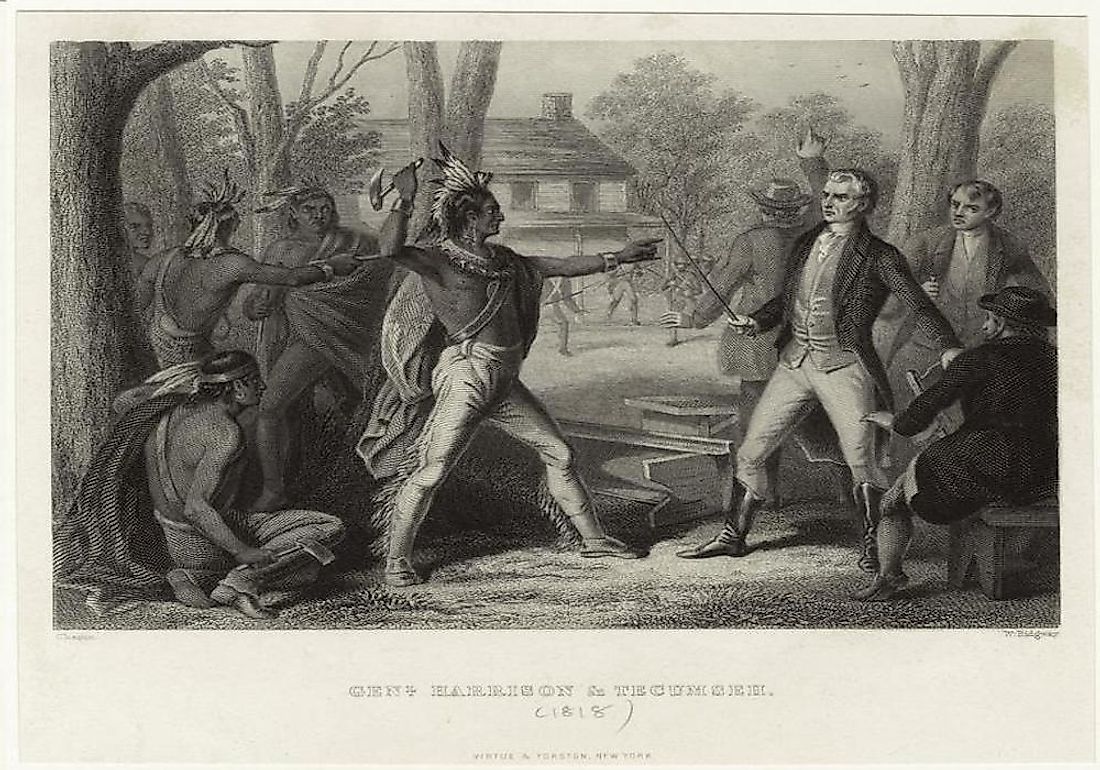Chief Tecumseh - Important Figures in History

5. Early Life
Tecumseh, who was also known as Tecumtha, was born in March 1768 in the Old Chillicothe town in Ohio. According to the Shawnee people, Tecumseh means either "shooting star" or "panther across the sky". Tecumseh was raised in the time of the North West Indian War and the American Revolutionary War and this gave him a warfare exposure. During his boyhood, he watched his father Pucksinwah be killed by white frontiersmen during Lord Dunmore’s War in 1774 at the Battle of Point Pleasant. The first battle that Tecumseh witnessed was the Battle of Piqua. He then decided on becoming a warrior, following the footsteps of his father. It was at the age of 15 when Tecumseh joined Shawnee’s band after the end of the American Revolutionary War. The band aimed at stopping the invasion of their lands by white settlers.
4. Career
When white settlers were invading the local’s lands, the major tribes of Ohio formed a confederacy known as the Wabash Confederacy in order to fight back against the American settlers. It was during this war that Tecumseh began his active participation in fighting alongside his older brother Chiksika. In the early parts of 1789, Tecumseh together with his brother, traveled to the Running Water to the south in order to fight alongside the Chickamauga. They were accompanied by twelve other Shawnee warriors. It was in this place that Tecumseh met Dragging Canoe who was leader of the Cherokee. Tecumseh’s brother was killed while he was leading a raid and that’s when Tecumseh assumed the leadership of the small Shawnee warriors.
In the year 1790, Tecumseh returned to his boyhood hometown in Ohio. He then took part in a number of battles.
3. Major Contributions
In Canada, Chief Tecumseh is regarded as a hero who helped to defend Canada against the pressing American invasion in the War of 1812 during the time of manifest destiny. Dedications to Tecumseh include the naming of towns, streets, and parks, as well as a massive portrait of Tecumseh which hangs in the Royal Canadian Military Institute in Toronto. A warship, named the HMS Tecumseh and originally built in 1815 sank in the Penetanguishene harbor in Ontario in 1828.
2. Challenges
Despite Tecumseh’s efforts of uniting soldiers in readiness for the war with white settlers, he still received rebellion from some nations from the south and particularly from chief Pushmataha of Choctaw.
1. Death and Legacy
Tecumseh was killed on the 5th of October, 1813 during the attack on the British and Native Americans in the Battle of the Thames. He was killed in a place near Moravian town, and after his death, his confederacy gave in to Harrison in Detroit.
Tecumseh is still remembered to date because of the words that he used to tell his people. He was an orator and a good inspirational speaker. His famous quotes including; “Live your life so that fear of death can never enter your heart”.
Since Tecumseh was at the forefront in liberating Canada, he is honored in Canada by being ranked at position 37 in The Greatest Canadian list.
Tecumseh Court was built in the United States Naval Academy to commemorate his heroism.







